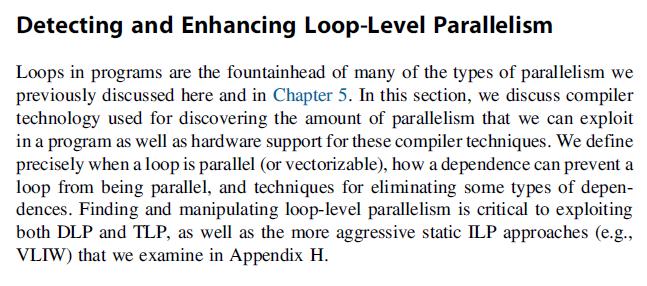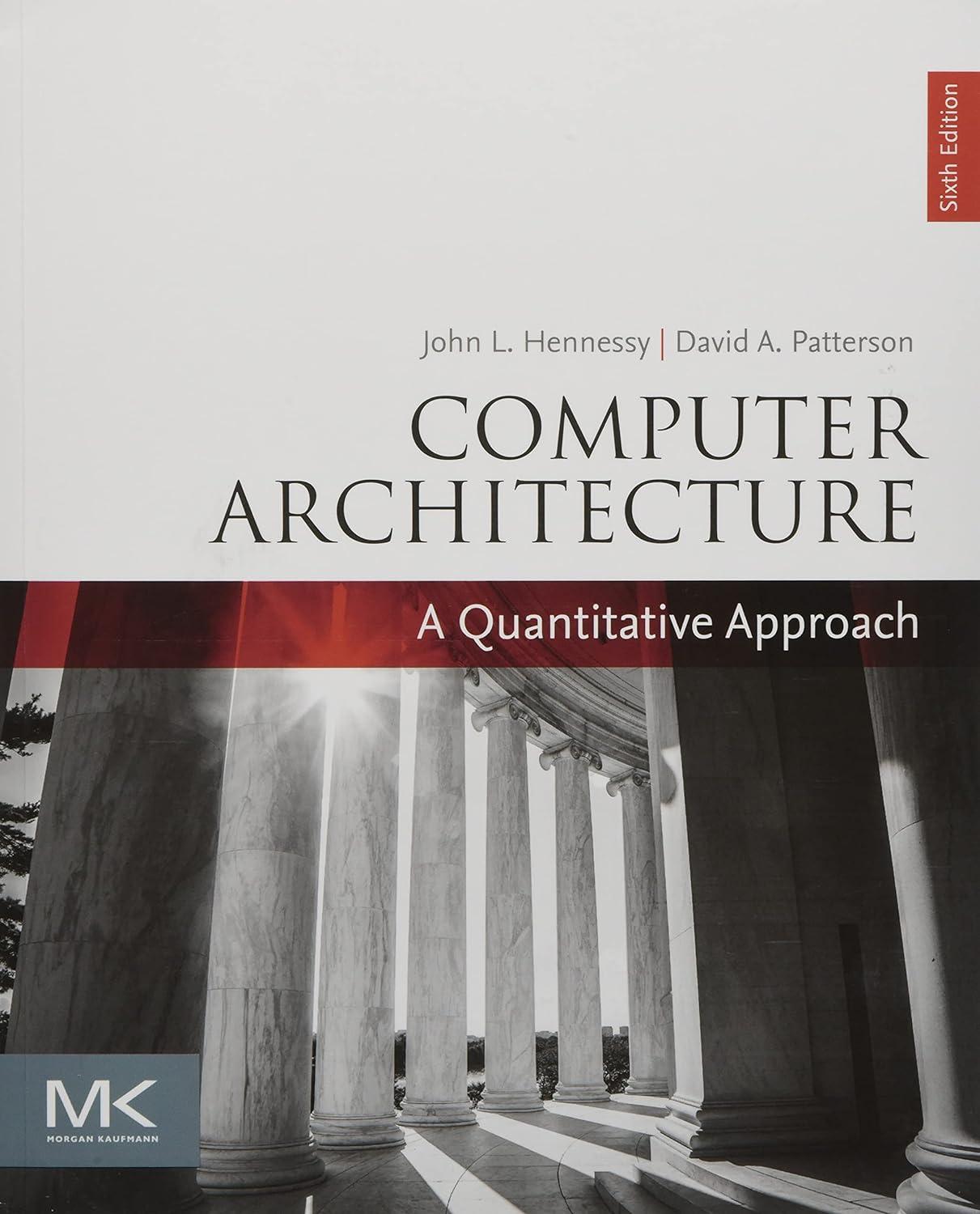Section 4.5 discussed the reduction operation that reduces a vector down to a scalar by repeated application
Question:
Section 4.5 discussed the reduction operation that reduces a vector down to a scalar by repeated application of an operation. A reduction is a special type of a loop recurrence. An example is shown as follows:

A vectorizing compiler might apply a transformation called scalar expansion, which expands dot into a vector and splits the loop such that the multiply can be performed with a vector operation, leaving the reduction as a separate scalar operation:

As mentioned in Section 4.5, if we allow the floating-point addition to be associative, there are several techniques available for parallelizing the reduction.
a. One technique is called recurrence doubling, which adds sequences of progressively shorter vectors (ie, two 32-element vectors, then two 16-element vectors, and so on). Show how the C code would look for executing the second loop in this way.
b. In some vector processors, the individual elements within the vector registers are addressable. In this case, the operands to a vector operation may be two different parts of the same vector register. This allows another solution for the reduction called partial sums. The idea is to reduce the vector to m sums where m is the total latency through the vector functional unit, including the operand read and write times. Assume that the VMIPS vector registers are addressable (e.g., you can initiate a vector operation with the operandV1(16), indicating that the input operand begins with element 16). Also, assume that the total latency for adds, including the operand read and result write, is eight cycles. Write a VMIPS code sequence that reduces the contents of V1 to eight partial sums.
c. When performing a reduction on a GPU, one thread is associated with each element in the input vector. The first step is for each thread to write its corresponding value into shared memory. Next, each thread enters a loop that adds each pair of input values. This reduces the number of elements by half after each iteration, meaning that the number of active threads also reduces by half after each iteration. In order to maximize the performance of the reduction, the number of fully populated warps should be maximized throughout the course of the loop. In other words, the active threads should be contiguous. Also, each thread should index the shared array in such a way as to avoid bank conflicts in the shared memory. The following loop violates only the first of these guidelines and also uses the modulo operator, which is very expensive for GPUs:

Rewrite the loop to meet these guidelines and eliminate the use of the modulo operator. Assume that there are 32 threads per warp and a bank conflict occurs whenever two or more threads from the same warp reference an index whose modulo by 32 are equal.
Section 4.5

Step by Step Answer:

Computer Architecture A Quantitative Approach
ISBN: 9780128119051
6th Edition
Authors: John L. Hennessy, David A. Patterson





